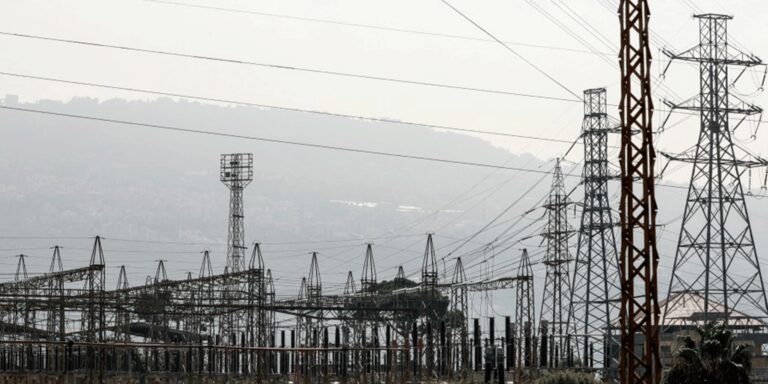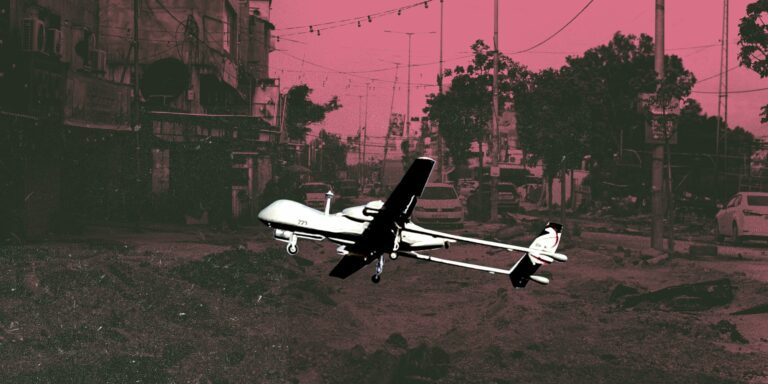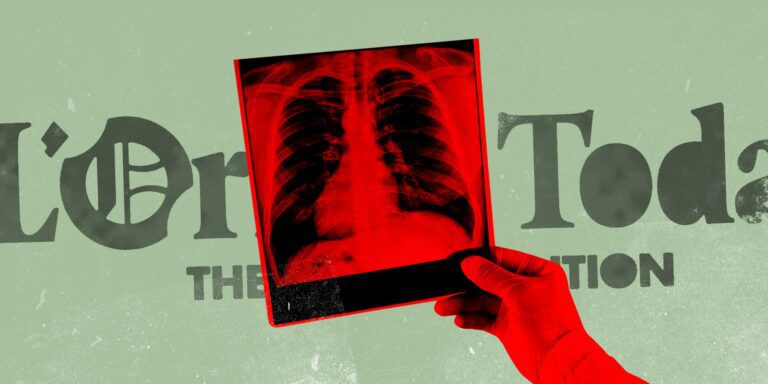Narrative One:
Suffocating at the 86th Roundabout
At this time of year, Tehran’s sky is mostly smoggy. One’s breath tastes of lead and dust. Sometimes it presses your chest so intensely that all your senses are overcome with a feeling of suffocation.
In sharp contrast to this feeling of suffocation, here, on South Narmak Street, in the tumult of cars halted behind the red light, four young women strolling with their hair loose emboldens the drivers to honk their horns in praise and encouragement. Witnessing such scenes in a part of Tehran that was once controlled by religious fanatics, and played a special role in the victorious 1979 revolution, shows that at least some Iranian traditionalists are gradually changing course.
A hopeful smile emerges on the faces behind the wheels and stays for a moment after the light turns green. The car turns right, and you see the distorted “86th Roundabout” sign, which is believed to be the home of the first person executed in the aftermath of the recent popular protests. The feeling of suffocation is overwhelming again.
Today, it is one week since the execution of Mohsen Shekari, the young man hanged after being condemned for “waging war against God.”
Under the heavy gaze of the street vender on the northern side of the roundabout, who spends more time surveying passers-by than caring for the goods he is supposed to be selling, eyes scan for any indication of mourning at the gate of a house: a sign, a message of condolence, a ceremonial chamber erected in memory of those who die young. But there is nothing in the narrow streets and alleys leading to the 86th Roundabout to remind one of Mohsen Shekari.
There are only banners with ritualistic mourning slogans commemorating the death of the Prophet’s daughter, who must have died some 14 centuries ago. There are remnants of erased murals, which seem to appear more frequently in this part of Tehran than in other parts of the city. A phrase on a garbage bin on the southern side of the roundabout stands out: “Burial place of Khamenei and his mercenaries.”
In the street’s heavy silence, amidst the old dilapidated buildings, a man is saying his prayers. It is one street past Danesh 1, the street believed to be home to Mohsen Shekari’s family. It is not known if the man is a local.
As one of the shopkeepers in the neighbourhood said: “People of all walks of life live here. The poor, the rich, the religious, the non-religious. You can’t distinguish between them anymore. There are a hundred roundabouts in Narmak. In the past, these roundabouts were meeting points in the neighbourhood. People cared about each other and exchanged news here. Now everyone is just busy with themselves.”
There is one direct message conveyed herein: “If you are here to inquire about the family whose son danced on the gallows a week ago, forget about it!”
Amidst the heavy security controlling this neighbourhood and nearby districts and, subsequently, the unusual peace and quiet, the residents are doing their best to normalise conditions.
“It’s not often as quiet and peaceful as it is now. See how silent it is?”
Many of them, as other Iranians, had probably never heard the name Mohsen Shekari until the day of his “execution.” Nor did they know they were neighbours. But then the cries of a woman in a dead-end alley near Narmak’s 86th Roundabout broke the silence in the morning of 8 December 8, 2022.
“Was it her mother or sister? I couldn’t tell. But when they informed the family that Mohsen had been executed, they came out into the alley and shouted incessantly. A group of people came out at night and lit candles in front of their house, though it was full of security forces everywhere.”
Narrative Two:
Kratos in Chains
Mohsen Shekari was sentenced to death for “waging war against God.” He allegedly blocked the road and wounded a Baseeji Para militiaman with a weapon. Human rights activists called his court case “a sham trial with no regard to due process.”
He was executed in Rajaeishahr Prison in Karaj just 75 days after his arrest. No news of the allegations against him nor his imminent execution had been published until the day of his hanging, and no one except his cellmates, who later told the story of his incarceration days, knew of the looming death.
“I saw death before my eyes, but I never really died. I always liked to die, to see how life ends. I might go back to life. Like in a computer game. They don’t die in games. They get wounded and just pass out because of the intense pain.”
For Mohsen Shekari, the 23-year-old from Narmak in Tehran, who decided to travel from the capital’s easternmost point to its westernmost point to attend the street protests on the evening of September 25, 2022, daily life was no more complex than for millions of other Iranian youth.
According to his cellmates, he worked in a café near Haft Howz in the east of Tehran and loved gaming. Gaming for Mohsen and his generation was a shared language, a bridge to communicate.
“I heard someone in the ward talking loudly about ‘Dishonoured.’ I was happy. ‘Great!’ I said. There is someone here I can talk to about gaming.”
This is a quote by a famous streamer and gamer who had been detained during the protests and was kept in the same prison ward as Mohsen Shekari. After his execution one of his prison mates tweeted the following:
“He was a gamer. He loved God of War. He wanted to make videos about games. What a great friend he could have been to me. I feel they killed my pal.”
Or take the following tweet.
“They killed a world of dreams. Mohsen Shekari used to work in a coffee shop and loved computer games. I don’t think I can ever forget that quiet boy, who used to sit in Ward 241, facing the entrance. I don’t think I can ever forget Mohsen.”
Documentarist and graphic designer Babak Afiati, who was in the same prison ward as Mohsen Shekari, wrote the following on his Instagram account.
“My brain is perishing away. I was in the same ward as Mohsen for twenty days of my detention in Evin. Mohsen worked in a café. He talked of his love of gaming the entire time. He used to tell me stories of God of War. He talked of his loneliness. He would join me in sit ups during the last days. If he could get any extra food, he would share it with me.”
The economist Davoud Souri, who was detained with Mohsen Shekari in the same ward for a while, tweeted: “People talk of his being a gamer and his love of gaming. I remember his young face talking with so much enthusiasm about his games (which I don’t understand at all) and my eyes are filled with tears.”
The recurrent theme in these narratives is that Mohsen Shekari, the first person to be executed for the recent anti-government protests in Iran, until his very last day believed that his death sentence would be annulled.
“One time, he was happy after he returned from the interrogations and told me: ‘They say if the Baseeji person forgives me, they will not charge me with waging war against God and will give me ten years instead,” one of his cellmates said. “The Baseeji, who was injured, is expected to forgive me. Execution is a joke. They never execute a person for inflicting a few scratches.”
Narrative Three
Decoding Figure “23” and Execution “In Public”
Mohsen Shekari was hanged in silence, having had no access to legal representation prior to that, while his life story only became known a short while after his execution. The 2nd execution on the other hand received considerable media coverage.
Images and videos of the daily life of the 23-year-old man, and his family’s struggles to overturn his sentence, were published on social media. Rope climbing and heavy weightlifting had made Majidreza Rahnavard a successful wrestler.
“He did sports for fun. Some people say he used to work in a fruit and vegetable shop. But I don’t know if that’s true.”
Majidreza was a native of 32nd Horr Ameli Street, which is near the shrine of the 8th Imam in a largely religious area. He was charged with the murder of two Baseeji militia members and sentenced to death. He was executed “in public” 23 days after his arrest in the presence of members of the security forces and the families of the two Baseejis who were killed.
The legal media published a video of Majidreza’s confessions, in which he claimed: “As I came out of the house, I stabbed the first one and then I stabbed everyone who approached me. It was a case of fratricide. I am more in a hurry to be punished than my victims’ families.”
Majidreza is talking about the day of the incident on November 17, 2022, the last day of the three-day national strike, which saw shopkeepers in several Iranian cities join.
A program on the Khorasan Razavi provincial channel broadcast the first video after his arrest in which he said: “I work in a fruit and veg shop. On Thursday, I didn’t feel well and came home early. Everything was quiet until 1 or 1.30 PM. Then I heard the noise of the protests. They had fired teargas. My mother was sitting in one of the shops, waiting. My brother wanted to go fetch her. I was looking outside from my window.”
“Officers were beating people,” he continued. “I opened the door and a group of Baseeji paramilitary were at the door. I hadn’t done anything, but when they told me to go inside, I lost control and I don’t know what I did.”
Human rights activists have serious doubts regarding the accuracy of these confessions and the course of events.
Only one picture of Majidreza’s family has been published, showing how he met his mother in prison. She was only informed of his execution when the security forces were already burying him. In a video of the burial ceremony, a woman can be heard saying: “When our 23-year-old son is here in the grave, what is there for us to fear?”
Other videos show that, despite all restrictions, his family managed to mourn their lost son by holding a memorial and publishing leaflets.
In his will written prior to the execution, Majidreza wrote: “ No prayers at my grave. Don’t recite the Qu’ran. I don’t like you to cry. Be happy at my grave. Play happy songs.”
The latter is a clear sign of rebellion and a serious contest of beliefs between those of the protesting youth and the ruling ideological structure in Iran.
Narrative Four
Numbers Queuing: 26 People on Death Row
There is an absence of transparent official information on the situation of the detainees, yet the latest news indicates that at least 26 of those arrested in relation to the recent protests are at risk of being executed.
Lack of access to a lawyer of their choice, which creates a feeling of powerlessness and helplessness, psychological torture, being promised reduced punishment for a (forced) confessions are some of the experiences that those sentenced to death for “waging war against God” share.
Although, due to the two executions, the popular protests have been beset by a sense of fear, some families of those sentenced to death have published videos and broken a taboo by informing the public about the conditions of their children and loved ones.
In the absence of a lawyer of their choice, they demand justice while trying to influence public opinion. An example is Mohamed Mehdi Karami’s family, who asked the Iranian judiciary to cancel the execution order against their son in a video published on December 18, 2022. In it, Mohamed Mehdi’s father Mashallah Karami says he is a street vendor, while his son is a national karate champion who won medals at several national contests.
Mohammad Mehdi was arrested and charged after clashes broke out between the police and a group of protesters following the memorial service for Hadis Najafi, the 20-year-old girl who was killed in the protests in September. Mohammad Mehdi is one of the 15 people charged in Karaj city who face execution.
Another example is the public support for Dr Hamid Ghareh Hassanlou, a radiologist, who was arrested in the same clashes following Hadis Najafi’s memorial service. He too is facing the death penalty.
The mother of Saman Yasin demanded by video her son’s death penalty to be overturned. Her appeal has also sparked public interest. Saman Yasin, a rapper, was arrested during protests in Kermanshah. He faces allegations of “waging war against God” for drawing a pistol and firing three bullets, as well as having the intention of committing crimes against national security. He too is at risk of execution.
On December 12, 2022, he attempted to commit suicide in Rajaeishahr Prison in Karaj, but was saved after receiving medical help. News resources blame the prison’s hard conditions, psychological pressure, and the imminent risk of being executed for the attempt to take his own life.
Although current media narratives are understandably emotional as they aim to provoke public opinion in support of the protesters sentenced to death, activists believe that what is actually needed most is proper legal representation and the right to due process in order to stop the executions.





